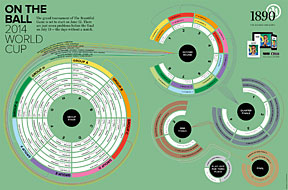The eyes of the world are currently on Brazil. June 12 will see the world's most successful footballing nation open the World Cup on its own soil with a match against Croatia. Brazil has taken five titles and produced some of the greatest stars in international football, including Pelé, Ronaldo and Kaká. Brazilian players can be found in the most prestigious clubs in the world, like Dante, who plays for FC Bayern München. A sixth World Cup is not unlikely, with Felipe Scolari's team said to have a good chance of taking the title.
Besides great soccer players, Brazil has another strong feature: the possibility of early retirement. If Pelé were an average Brazilian, he would have retired at the age of only 55 – ten years before reaching the statutory retirement age of 65. By way of comparison: the European early retirement champion is Austria. Although the statutory retirement age in Austria is 65, people tend to retire aged only just under 59 on average. Germans work until the age of 63, with retirement commencing successively at 67 by law.

